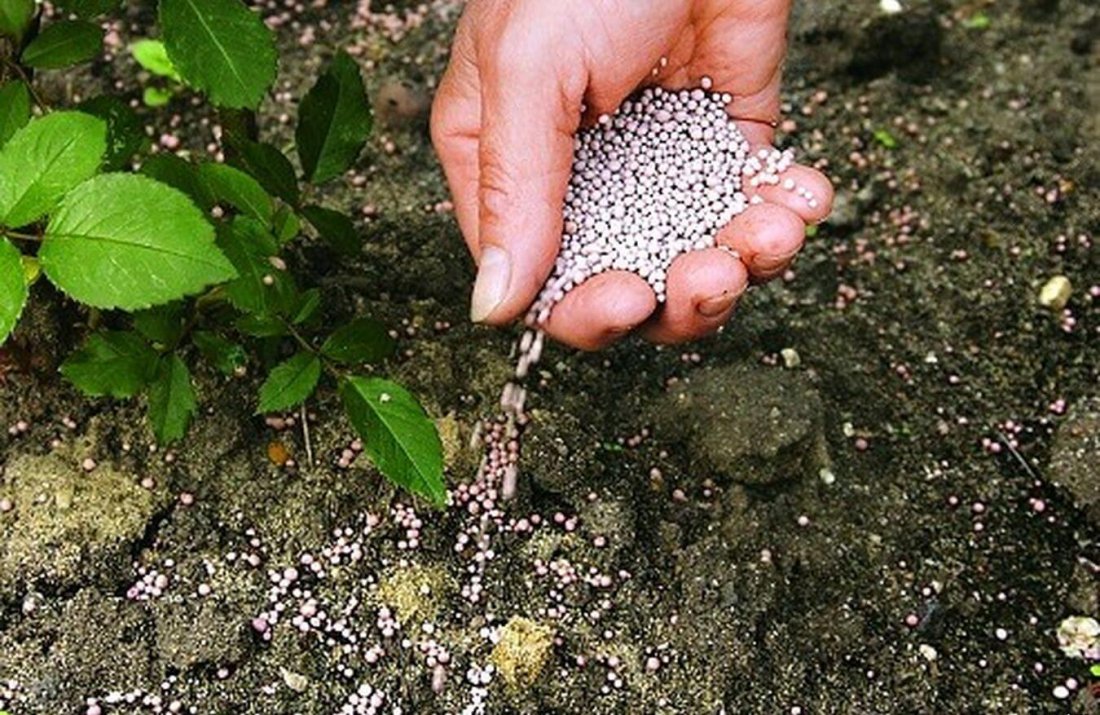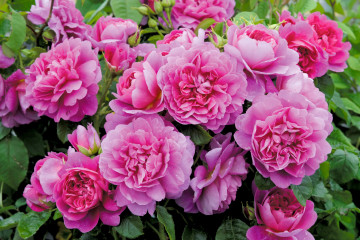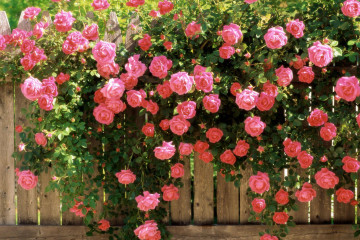Rose Elf (Elfe) - description of the variety and its features
Content:
Climbing Rose Elf is a spectacular large plant that can give the garden a romantic look. With proper care, it will bloom for a long time and abundantly, attracting attention to itself. The versatility of the "elf" allows her to be used both in group and single landings.
History of creation and description of the variety
The Elf climbing rose was created by the German company Rosen Tantau in 2000. The elves belong to the Nostalgische Rosen series ("Nostalgic roses") and are described as modern garden plants.
Short description
The shoots of the climbing rose Elf reach 2.5 - 3 m in height and 1.5 m in width. The stems are erect, but if they are put on the support lower, then they form a cascade. The buds are fragrant, densely double, large - about 12 cm in diameter. The corollas are painted in a creamy white color; closer to the middle, lemon and green tones prevail. One flower can have up to 57 petals.
Description of peduncles of climbing rose Elf - lush inflorescences of buds up to 6 pieces. The leaves are dark green, shiny, healthy.
Advantages and disadvantages
Among the advantages of this variety, it is worth noting:
- abundant flowering;
- long flowering period - almost all summer (less in mid-July than the rest of the time);
- delicate fruity aroma;
- resistance to powdery mildew and black spot.
The disadvantages include:
- frost resistance - up to -29 ° С (in 4-5 zones it requires insulation, as it can freeze out);
- low resistance to heavy rain - it is advisable to plant in an area next to a wall or fence on the leeward side.
In general, most gardeners consider these disadvantages to be features of agricultural technology, and not obvious disadvantages.
Use in landscape design
Climbing roses are used in vertical and horizontal landscaping. They decorate arches, gazebos, form hedges. Rose Elfe is very beautiful like a tapeworm. If you take proper care of the rose, then it grows strong, large, with huge inflorescences. These qualities of the bush are sure to attract the eye.
Bright flowers and dense greenery will help transform even the darkest corner of the garden. These roses add a romantic touch to the garden.
How to properly plant in open ground
If the gardener decided to plant a rose on the site, then the simplest and most practical solution is to purchase a seedling in a specialized store or nursery. This plant retains all the characteristics of the variety.
Climbing roses also lend themselves well to grafting. Young strong plants are used for planting material after their first flowering.
Location selection
The development of the plant depends on the correct choice of location.For a rose, it is important to choose an open, well-lit place, but without direct sun at lunchtime, protected from wind and drafts. Climbing roses should preferably be placed on a southern or southwestern slope. Along a wall or fence so that whips can curl over them.
What time is the boarding
In the southern regions, Elf climbing roses can be planted in autumn and spring. The plant will have time to adapt and take root. In a temperate climate with severe winters, planting is carried out in the spring, when the soil warms up and all frosts have passed.
How to prepare the soil and flower for planting
The soil for the rose should be fertile and light. Such a layer of soil is necessary not only on the surface, but also along the entire length of the roots. If the soil is heavy, with a lot of clay, then it is recommended to add compost, peat, coarse sand, humus to it.
With sandy soil, moisture does not linger and the surface of the earth heats up a lot. In this case, you can add a mixture of peat, turf and some manure or humus.
Roses grow on slightly acidic soils. Therefore, peat is introduced into neutral or alkaline soil. With an excess of acidity, lime or ash is used.
Before planting, the seedling is soaked in water for a day. During this time, the plant is saturated with moisture. The roots and shoots are pruned from the bush, leaving strong and healthy parts. Immediately before planting, the rose can be held in a weak solution of potassium permanganate for about half an hour.
Landing procedure
The Elf climbing rose bush is large, so there should be at least 0.5 m between the specimens.
Landing is carried out sequentially:
- For a seedling, a hole is dug a little more than 0.5 m deep. If the groundwater is located close to the surface of the earth, then 10 cm of drainage from large pebbles or rubble is poured onto the bottom of the hole. Then compost or last year's manure is placed in the same volume. 10 cm of soil is placed on the fertilizer.
- The seedling is placed in the hole so that the main roots are spread out.
- Gently holding the plant, the hole is covered with earth. The soil around the bush is compacted.
- After planting, the soil around the seedling is carefully shed. You can use stimulants of root formation - for example, Heteroauxin, Kornevin. If the soil has subsided, then it is poured over.
Plant care
When keeping a climbing rose, not only planting is important, but also caring for it: watering, maintaining moisture, feeding, pruning and transplanting.
Watering rules and humidity
Roses can survive drought for a while, but this almost always negatively affects their appearance and flowering. In dry weather, watering twice a week with warm water is enough. With the onset of cool days, the volume of water is reduced. By the beginning of autumn, these plants no longer need watering.
For better well-being, roses can be pampered with spraying. To do this, use warm water and carry out the procedure in the morning or evening.
Top dressing of the soil
In the spring, when the plant begins to grow, it requires nitrogen fertilization. During flowering, they are fed with phosphorus and potassium.
From the beginning of the growing season to the second half of summer, fertilizers are applied twice a month. There are special complex feedings that include organic and mineral substances.
Roses respond well to humus. Mulching is also useful for them. It not only nourishes the plant, but also retains moisture for longer. In addition, a hard crust does not form on the soil surface.
Pruning
There are certain rules:
- In the spring, frost-damaged whips are cut, as well as the tops of the shoots.
- Summer pruning is required to stimulate flowering and shape the bush.
- In the fall, damaged or too elongated stems are removed. Such pruning is called sanitary.
Transfer
If you need to transplant the bush to a new place, then it is better to do this in early spring (after all frosts) or early autumn (so that the plant has time to take root before the onset of cold weather).
It is recommended to prune the shoots before transplanting. If this is a small bush, then young shoots are slightly shortened. In an adult climbing rose, the stems are cut by about 0.5 m, and the old shoots are completely removed.
- First, prepare a hole with earth. The diameter of the hole should correspond to the size of the crown of the transplanted rose.
- The bush is carefully dug out with a clod of earth. Too long roots are chopped off. If the soil does not crumble, then a lump can be wrapped in a cloth.
- After transferring the plant to a new place, the soil around the bush is compacted and thoroughly shed.
Preparing climbing roses for winter
In climates with mild winters, the bushes are covered directly on the support. Spruce branches are used, which is wrapped on top with a film. If possible, cover a few roses. Then the warm air is better preserved.
In cold climates, the lashes are removed from the supports in advance, otherwise they may break during frosts. The procedure is carried out in a few days, giving the roses the opportunity to gradually bend. When the lashes can be laid to the soil surface, they are securely fixed. For this, you can use twine. A layer of foam or boards is laid between the shoots and the ground.
When the weather sets in with a constant negative temperature, the plants are covered with spruce branches, and then with a covering material. Twine is used to fix the bushes.
At the onset of a thaw, the shelter is raised to allow a slight air circulation. Otherwise, the plant may resist.
Blooming rose
The period of plant activity is the time of vegetation, flowering and fruiting. Depending on the climate, it starts at the beginning or end of spring and lasts until the beginning or end of autumn. The rest of the year is a dormant period. It is needed so that the plant gains strength for the new season. Warming serves as a signal for the flower to wake up.
Young roses, the first 1-2 years, are not desirable to bloom. This takes away their strength, and the plants need to build up green mass, become stronger and winter well. Then next year they will bloom profusely.
At a more mature age, climbing roses also need watering, feeding and pruning. As they grow, they will need support to protect them from strong winds.
If the rose does not bloom, then perhaps the reasons lie in improper care:
- Applying too much nitrogen fertilizer during the flowering period. Phosphorus-containing feed should be used.
- Incorrect pruning of shoots. Weak shoots and those that do not have a growing point are removed. Fading buds should also be removed. They are cut 0.5 - 0.8 mm above the bud, which should be directed towards the inside of the bush.
- The intensity of flowering is influenced by the location of the bush. If the site is dark, damp or too dry, with drafts, then you can not expect abundant flowering.
- Diseases and pests can be the reason for the lack of flowers. The plant should be periodically inspected for their presence and preventive treatments with insecticides or fungicides should be carried out.
Flower propagation
The climbing rose is propagated in spring and summer. Varietal specimens give offspring with the help of grafts, layering and cuttings.
Layers
Breeding time is spring. For this, stems are taken with a length of 100 - 150 cm.These shoots should be cut above the buds and placed in longitudinal grooves in the soil (10 cm deep). The groove must be pre-watered and sprinkled with humus. The branch is securely fixed. Only the top of the shoot remains above the soil.
The following year, the cuttings are cut from the mother plant and grown like a normal seedling.
Cuttings
There are more of them from a climbing rose than layering. Breeding time is mid-June, while the stems are still flexible enough.
First, a mixture of fertile soil and coarse sand is prepared. Stock up in plastic cups or other small containers.
Each cutting should consist of a shoot with two internodes. The leaves are removed, a couple of pieces are left on the crown, but they are halved. By the beginning of autumn, the cuttings grow roots. New plants can be transplanted to a permanent location.
Vaccination
Held in late spring - early summer. There are many copies of this method of reproduction. However, the process itself requires a lot of labor and skill. A bud is cut from a cultivated plant and grafted onto a rosehip seedling. The inoculation should be 5-6 cm above the ground.
A T-shaped incision is made on the rosehip and a rose bud is inserted there. Then this place is fixed with a film for budding. It is sold in garden stores. After a month, the film is weakened so that the kidney grows. The following spring, the protection is removed from the bud. After a week, the rosehip shoot is removed.
Diseases, pests and ways to control them
The elf is resistant to powdery mildew and black spot. If, nevertheless, the plant is infected, then it should be treated with Bordeaux liquid. It is a powerful agent in the fight against bacterial and fungal diseases.
Roses are susceptible to attacks by spider mites, whiteflies, scale insects and thrips. If the plants are already infected, you can buy broad-spectrum insecticides in garden stores.
To prevent the dispersal of pests, there are the following preventive measures:
- Spraying. Insects do not tolerate high humidity.
- Inspection of shoots for the presence of insects and damage from them.
- Treatment with green soap twice a month.
Summing up all of the above, we can conclude that the climbing rose Elf is a fairly hardy plant. Subject to the rules of caring for it, the bush can be grown and propagated. For which he will thank with a long, abundant and lush flowering.





















